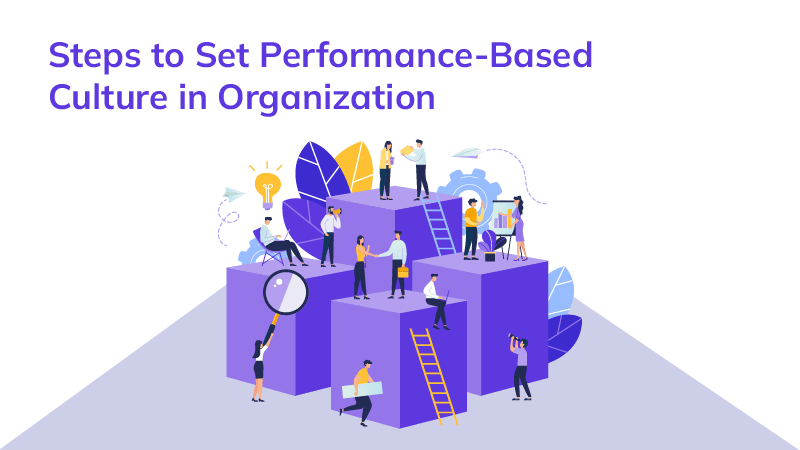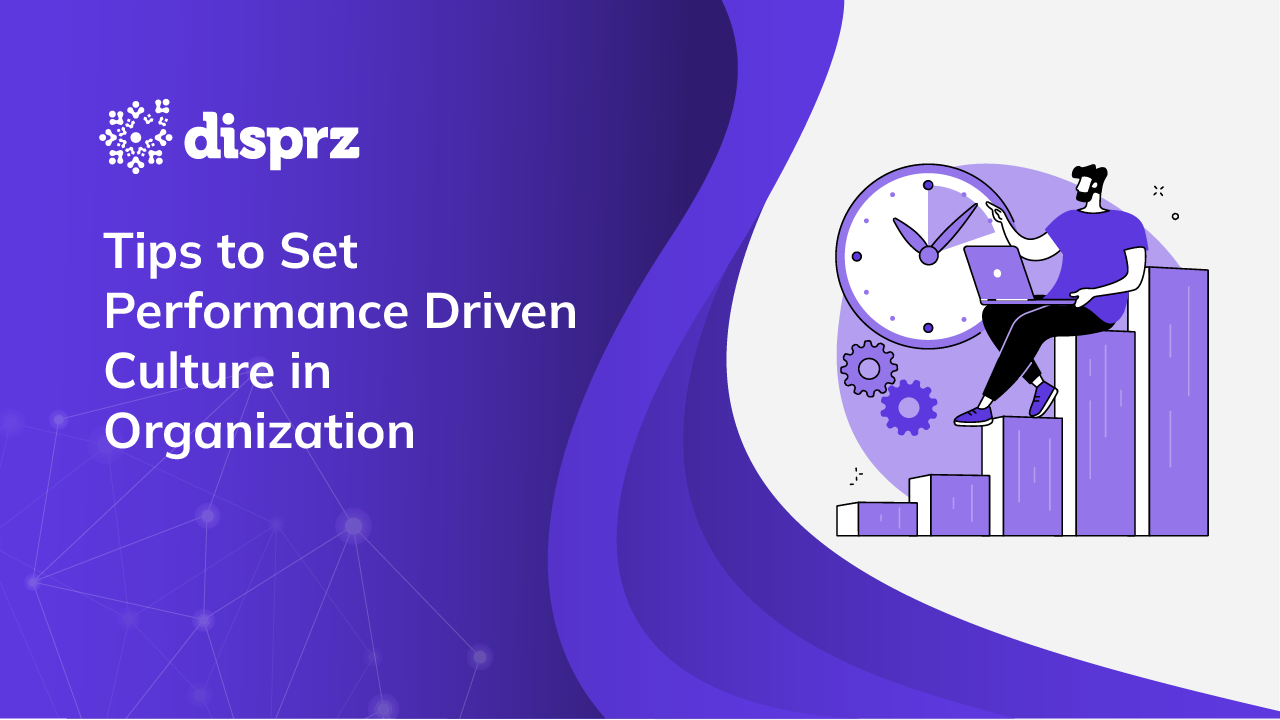Creating a management culture that enhances overall performance has led to an increasing need for organizations to utilize performance management to impact both organizational culture and performance. Contemporary organizations flourish through team-based collaboration. As per a recent Deloitte Global Human Capital Trends report, 65% of work is structured around cross-functional team-based structures. This trend is substantiated by the fact that 53% of executives acknowledge a considerable enhancement in performance due to the transition towards team-based work.
Establishing an effective performance-oriented culture, it's important to establish an effective and transparent ecosystem that will help to create fair performance evaluation and management systems.
Challenges Faced by Organizations in Setting a Performance-based Culture
Setting a performance-driven learning culture comes with its own set of obstacles.

Absence of Clarity and Vision
At times, employers forget to ingrain the vision and goals of the organization into employees’ mindsets. That remains only as pen-paper stuff. This lack of clarity and vision leads to employees finding it difficult to comprehend how the organization's goals relate to their own and the goals of their teams. Employees might not completely embrace the goals of the company without clear communication and support from the leadership.
Lack of Measurement Tools
Owing to antiquated or inadequate measurement instruments, organizations could encounter difficulties in precisely evaluating their employees’ or workforce performance. Assessing employee performance and pinpointing areas for development can be challenging in the absence of appropriate metrics and assessment techniques.
Resistance to Change
Employees who are used to the current procedures and systems may oppose the implementation of structural changes meant to support a performance-based culture. It takes skillful change management techniques and a transparent explanation of the advantages of the new architecture to overcome resistance.
Implementation Gaps
Organizations may find it difficult to carry out well-defined action plans because of conflicting priorities, lack of resources, or lack of responsibility. Initiatives for performance improvement may stall or fall short of expectations if prompt and decisive action is not taken.
Maintaining Momentum
All organizational levels must continue to put forth effort and dedication to preserve a performance-based culture and continuous learning. One runs the danger of falling back into old habits or losing steam over time if learning culture is not consistently reinforced.
How to Set a Performance-driven Culture?
The initial step requires a comprehensive assessment of existing norms, values, and behaviors prevalent within the organization.

Here are the following steps:
Assessing Organizational Culture to Uncover and Navigate Challenges
By analyzing the present culture, leaders can identify strengths to build upon and areas for improvement. Understanding the current culture, as outlined, also enables leaders to gain insights into potential barriers or resistance to change, which can inform the development of strategies for cultural transformation.
Setting Strategic Goals as a Blueprint for Performance Excellence
Setting learning goals and objectives for what is missing and what is required to establish a performance-based culture is crucial. This involves defining specific outcomes and desired behaviors that align with the organization's mission, vision, and values. Setting Strategic Goals as a Blueprint for Performance Excellence is setting clear goals that provide employees with a sense of direction and purpose, guiding their actions and decisions towards achieving desired outcomes. Moreover, clearly defined goals serve as benchmarks for measuring progress and evaluating the effectiveness of cultural initiatives.
Proper training and development play a crucial role in building a performance-based culture. Organizations must invest in providing employees with the necessary skills, knowledge, and resources to excel in their roles and contribute to organizational success. Training & Development programs should be tailored to address specific competency skill gaps and support the development of key capabilities required to adopt teamwork, continuous learning, and innovation.
Empowering Employees to Revolutionize Training with Technology
Reiterating the importance emphasized in "Utilizing a Learning Experience Platform (LXP), for Training Enhancement," employing an LXP serves as a comprehensive solution for crafting a meaningful learning journey to foster overall employee development. By leveraging an LXP, L&D professionals can seamlessly strategize the entire employee training and development process while steering clear of the aforementioned pitfalls. Investing in employee development enables organizations to equip their workforce to excel and adapt to evolving business needs through an innovative LXP enhanced by AI.
Harnessing Data Insights as a Steering Cultural Transformation
Delving into the significance of data insights for steering cultural transformation, organizations can harness tools and technologies to gather and analyze data, as discussed in "Leveraging Data Insights to Drive Cultural Transformation." This enables leaders to gain actionable insights into employee engagement, performance, and satisfaction. By embracing a data-driven approach, leaders can pinpoint trends, patterns, and areas for improvement, empowering them to refine strategies and interventions aimed at enhancing organizational culture.
Cultivating Feedback as an Engine of Continuous Improvement
Emphasizing the importance of feedback for continuous improvement, organizations should establish mechanisms for soliciting feedback from employees at all levels, as discussed in "Promoting Feedback as a Driver of Continuous Improvement." By fostering a culture of open communication and continuous improvement, organizations create opportunities for learning, innovation, and growth.
Leading by Example- Driving Change from the Top Down
Leadership support is essential for cultivating a better organizational culture. Leaders must demonstrate commitment to cultural transformation by modeling desired behaviors, communicating expectations, and providing resources and support. Strong leadership sets the tone for organizational culture, influencing employee attitudes, beliefs, and actions. By championing a performance-based culture, leaders inspire confidence, trust, and accountability, driving positive change throughout the organization. Demonstrating this commitment, leaders can leverage the AI-powered learning and skilling suite by Disprz to understand unique employee characteristics and preferences, customize coaching, and training material content, and improve insights with cumulative data over time.
Conclusion
Organizations often find it challenging to establish a performance-based culture due to various factors. These include resistance to change, lack of clear communication and alignment, inadequate measurement systems, and the absence of effective leadership buy-in. Additionally, the complexity of organizational structures and the inertia of existing processes can further impede efforts to instill a culture focused on performance and continuous improvement. To overcome these challenges, organizations can leverage platforms like Disprz, which offers tailored solutions to facilitate cultural transformation. Disprz LXP provides customizable learning and skilling suites powered by AI, allowing organizations to understand unique employee characteristics and preferences. By personalizing coaching, content, and insights, Disprz helps organizations create a culture of continuous improvement and growth.
To learn more about the missing piece in your organization L&D” and how to effectively set up a performance-driven culture, book a demo with Disprz today. Let us guide you on the journey to unlock the full potential of your workforce and drive sustainable success.








